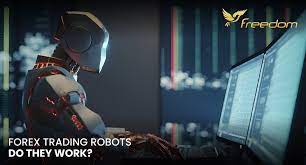
In the fast-paced realm of forex trading, where every second counts and market movements can change in an instant, traders are constantly seeking ways to gain an edge. One such avenue is through the utilization of forex robots, also known as forex robot advisors (EAs). These automated trading systems have garnered significant attention in recent years, promising to revolutionize the way individuals engage with the forex market. But what exactly are forex robots, how do they work, and what considerations should traders keep in mind when employing them? Let’s delve into this intricate world.
Understanding Forex Robots
At its core, a forex robot is a piece of software programmed to execute trades on behalf of the user, based on a predefined set of rules and algorithms. These algorithms are designed to identify trading opportunities by analyzing market data, such as price movements, trends, and technical indicators. By automating the trading process, forex robots aim to remove human emotions and biases from decision-making, thereby potentially improving trading efficiency and consistency.
How Do Forex Robots Work?
Forex robots operate by continuously monitoring the forex market for trading signals that align with their programmed strategies. When a favorable opportunity arises, the robot executes trades automatically, without requiring any intervention from the trader. This instantaneous execution can be particularly advantageous in a market where timing is crucial, as it enables traders to capitalize on opportunities even when they are unable to monitor the market in real-time.
Advantages of Forex Robots
- Emotion-Free Trading: One of the primary benefits of using forex robots is that they eliminate emotional decision-making from the trading process. Fear, greed, and other human emotions can often cloud judgment and lead to impulsive or irrational trading decisions. By relying on pre-programmed algorithms, forex robots can execute trades based solely on objective criteria, potentially leading to more disciplined and consistent outcomes.
- 24/7 Trading: Unlike human traders who need rest, forex robots can operate around the clock, tirelessly scanning the market for opportunities. This ability to trade 24/7 can be particularly advantageous in global forex markets, where trading sessions span different time zones.
- Backtesting and Optimization: Forex robots allow traders to backtest their strategies using historical market data, enabling them to assess the performance of their algorithms under various market conditions. Additionally, traders can optimize their robots by fine-tuning parameters to enhance performance and adaptability to changing market dynamics.
- Diversification: By deploying multiple forex robots with different strategies, traders can diversify their trading portfolios and reduce reliance on any single approach. This diversification can help mitigate risk and enhance overall stability in trading activities.
Considerations for Traders
While forex robots offer several advantages, it’s essential for traders to approach their use with caution and diligence. Here are some key considerations:
- Strategy Development: The effectiveness of a forex robot depends heavily on the quality of its underlying strategy. Traders should thoroughly research and develop robust trading strategies before deploying them in automated systems.
- Risk Management: While forex robots can potentially amplify trading efficiency, they also carry inherent risks. It’s crucial for traders to implement stringent risk management measures to protect their capital and minimize potential losses.
- Market Conditions: Forex robots are designed to operate under specific market conditions, and their performance may vary in different environments. Traders should regularly monitor their robots’ performance and be prepared to adapt their strategies accordingly.
- Monitoring and Supervision: Although forex robots can operate autonomously, it’s essential for traders to monitor their performance regularly and intervene if necessary. Market conditions can change rapidly, and human oversight is vital to ensure the effectiveness and integrity of automated trading systems.
In conclusion, forex robots represent a powerful tool in the arsenal of modern traders, offering the potential for enhanced efficiency, consistency, and profitability in forex trading. However, their successful deployment requires careful strategy development, robust risk management, and ongoing monitoring and supervision. By understanding the intricacies of forex robots and incorporating them judiciously into their trading activities, traders can harness their full potential and navigate the dynamic landscape of the forex market with confidence.